Bethlehem of the jungle
Living conditions in Belen, a.k.a Venice of Peru
Living conditions in Belen, a.k.a Venice of Peru

The Peruvian rainforest that surrounds Belen and it's mother city Iquitos makes the area only accessibly by boat or plane.

The first jesuit missionary got to Iquitos in 1739 and began spreading the Christian faith. Close to the city square called plaza the armas lies a slumarea called Belen which means Bethlehem in spanish. The area is suffering from family and community violence, alcohol and drug abuse, juvenile pregnancy and overcrowding.

Marixa Peña Pacayq and her son Natianael lives down in Belen in a small house built on stilts out on the floodplain of the Itaya river. Here they are coming back home with some firewood collected from a collapsed house nearby. Out of the eight people in the family Marixa is the only one with an income since her husband is imprisoned for incest. Every day is a struggle to make ends meet and get food on the table.
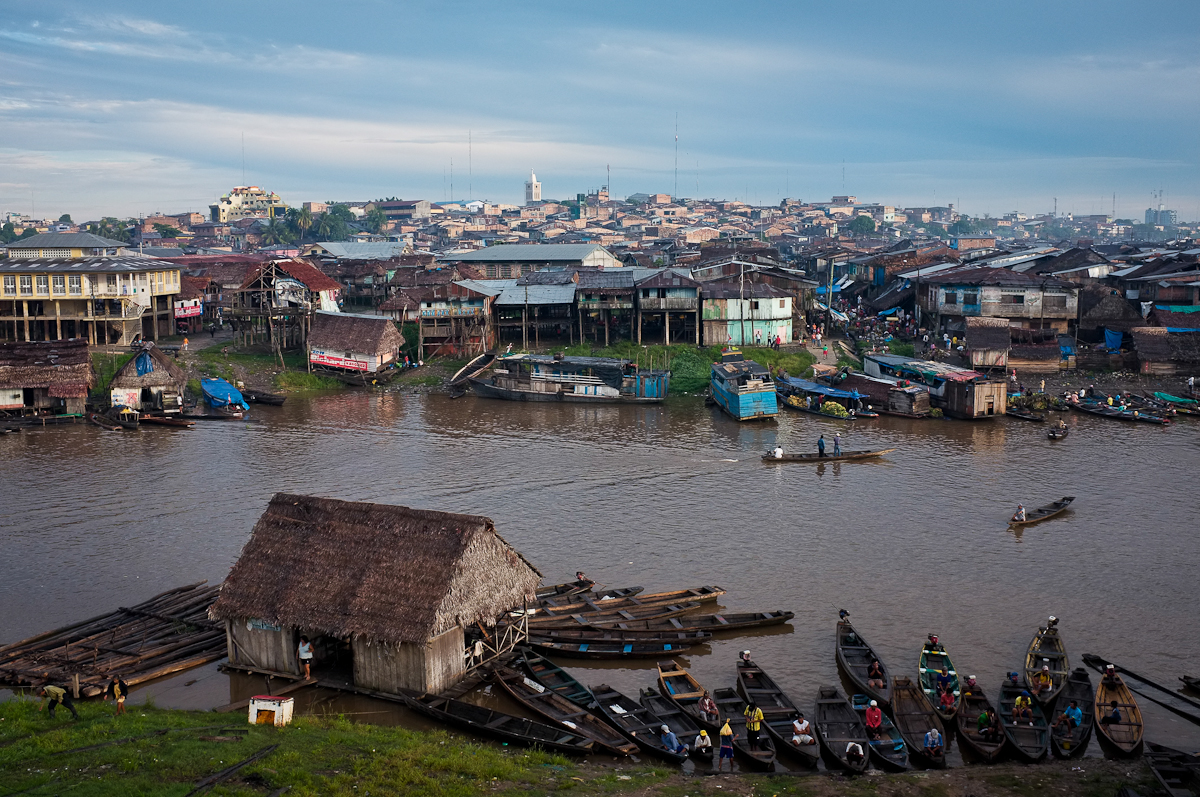
Puerto Belen is the spot where many of the products sold in Belens outdoor market comes ashore. It’s common that the products arrives on rafts that have driven with the river stream for days from small jungle villages. As big parts of the slum is built on stilts out on the floodplain the areas nicknam is the Venice of Peru. Canoe is the most common way of moving around during the rainy season when the water levels goes up by five-six meters.

In the early morning some of Belens inhabitants goes out to collect hot milk for their families. The milk is provided by the government to a few of the cities poor, it cost 0,5 soles (0,17 dollar) a month to be part of the milk program. In exchange for the warm milk each family also gives a log of wood that will be used to heat up tomorrows milk, a task that is rotated in-between the neighbors being part of the program.

The houses in lower Belen is built to manage the extreme water levels out on the floodplain. This houses for example is built on logs and simply starts to float when needed.
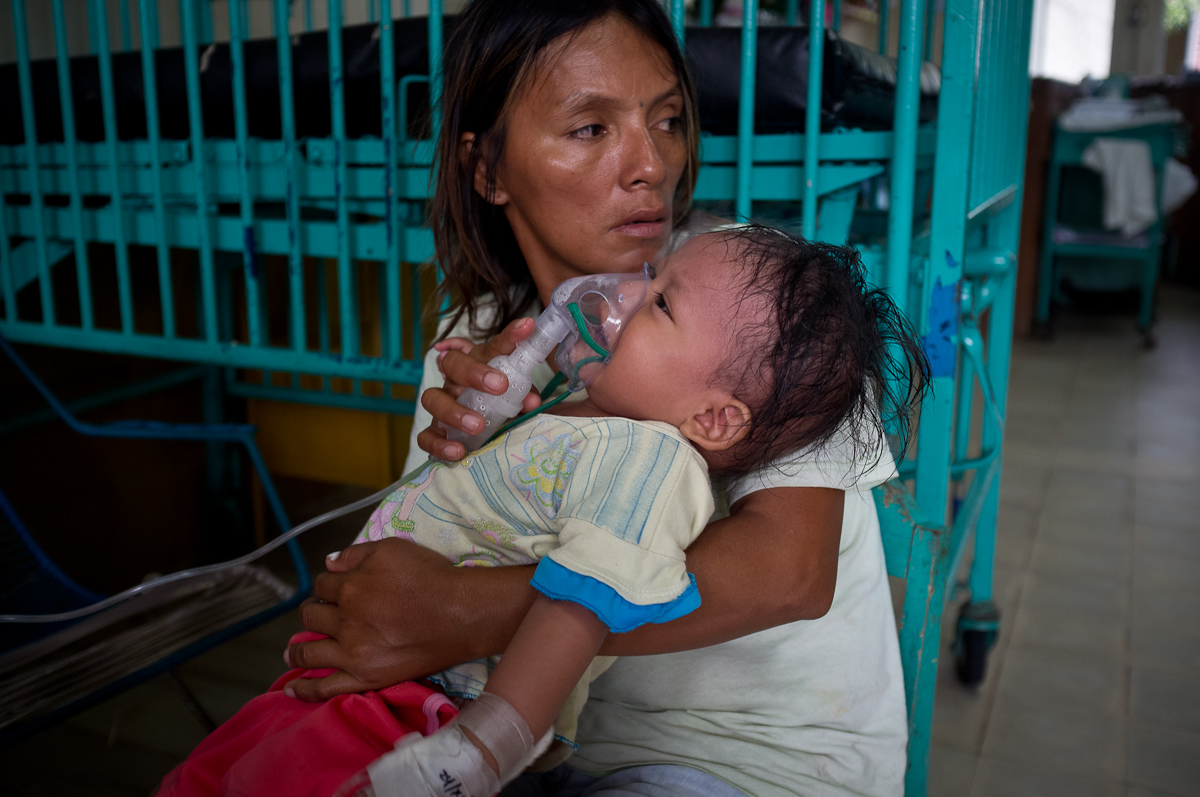
Rita Pinedo Rimachi is one of Belens 65 000 residents. Here she is giving her child Stefany oxygen in the Iquito hospital while waiting for a spine x-ray. Although children receives free medical care in Peru Stefanys recovery became costly. During this period Rita lost her income from guarding motorbikes and since she had more or less no savings the families situation went from bad to worse. Her biggest dream in life is to have a house that is her own. Rita is now living under a constant threat of eviction in a rented room no bigger then 12 sqm together with her seven children.
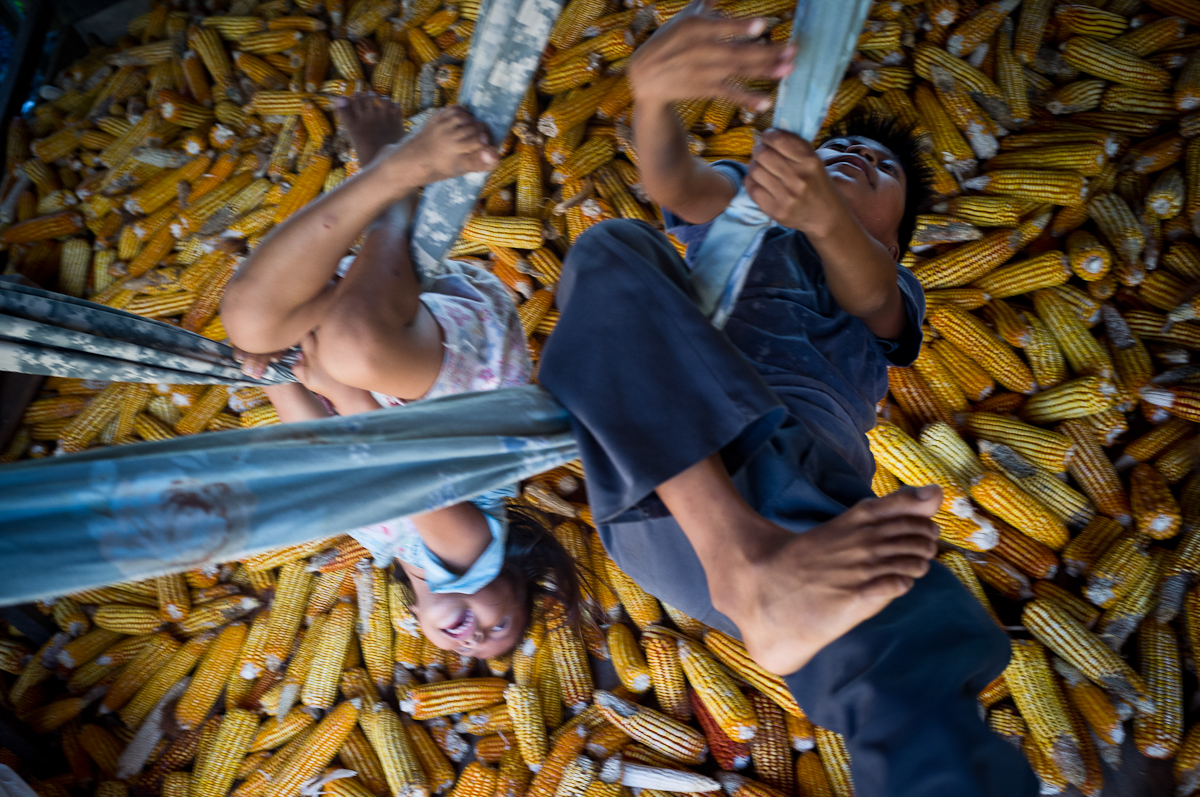
During the low water season (June through November) the families lucky enough to have a field out on the floodplain is able to earn some extra money by crowing crops and sell it on the local market. The most common crops is corn and yucca. The harvest is brought back to the families houses for preparation before the final sell.

In-between the houses in Belen during low water season the canals of remaining water acts like sewers and waste system. During the rainy season the water raises with all it’s dirt roughly to where the blue color ends on the house.
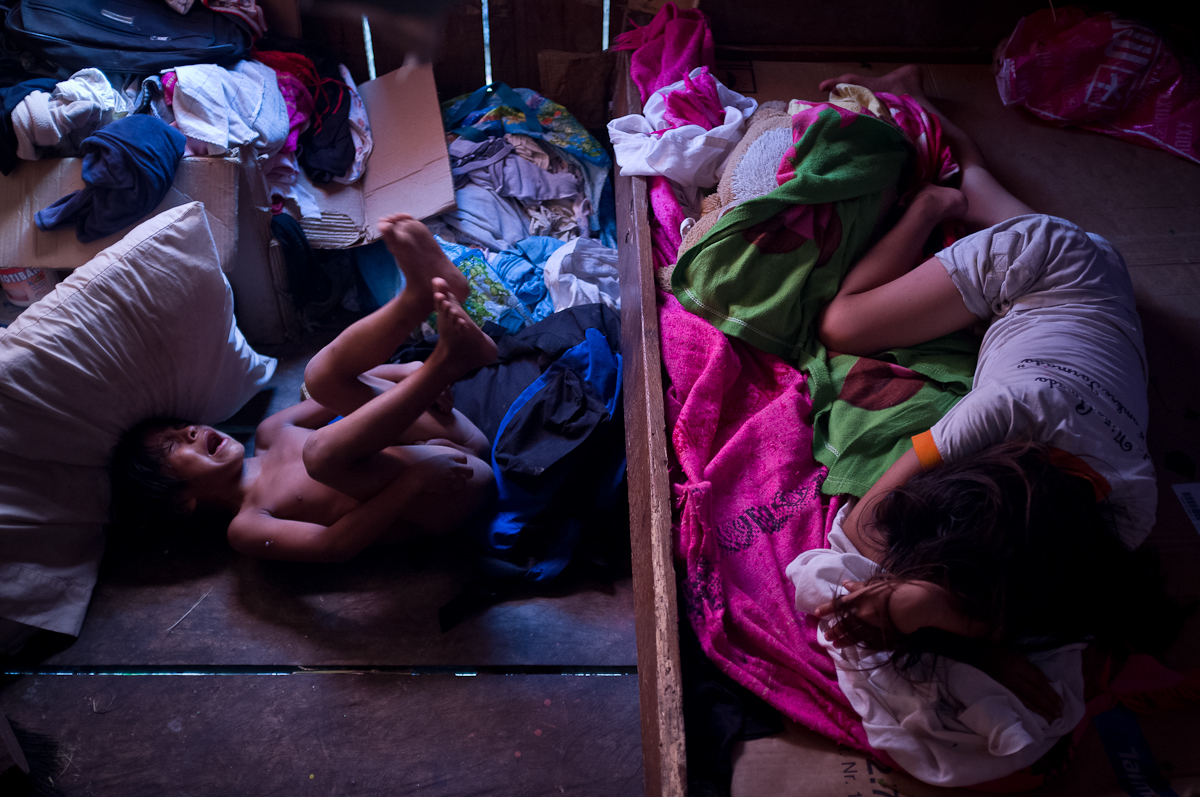
Jeremias Leoncio has just been whipped by his mother and lays screaming on the floor desperately scratching his skin. She used a type of stinging nettle called changa as whip. In Belen and the surrounding jungle this is a common way to punish disobedient children.
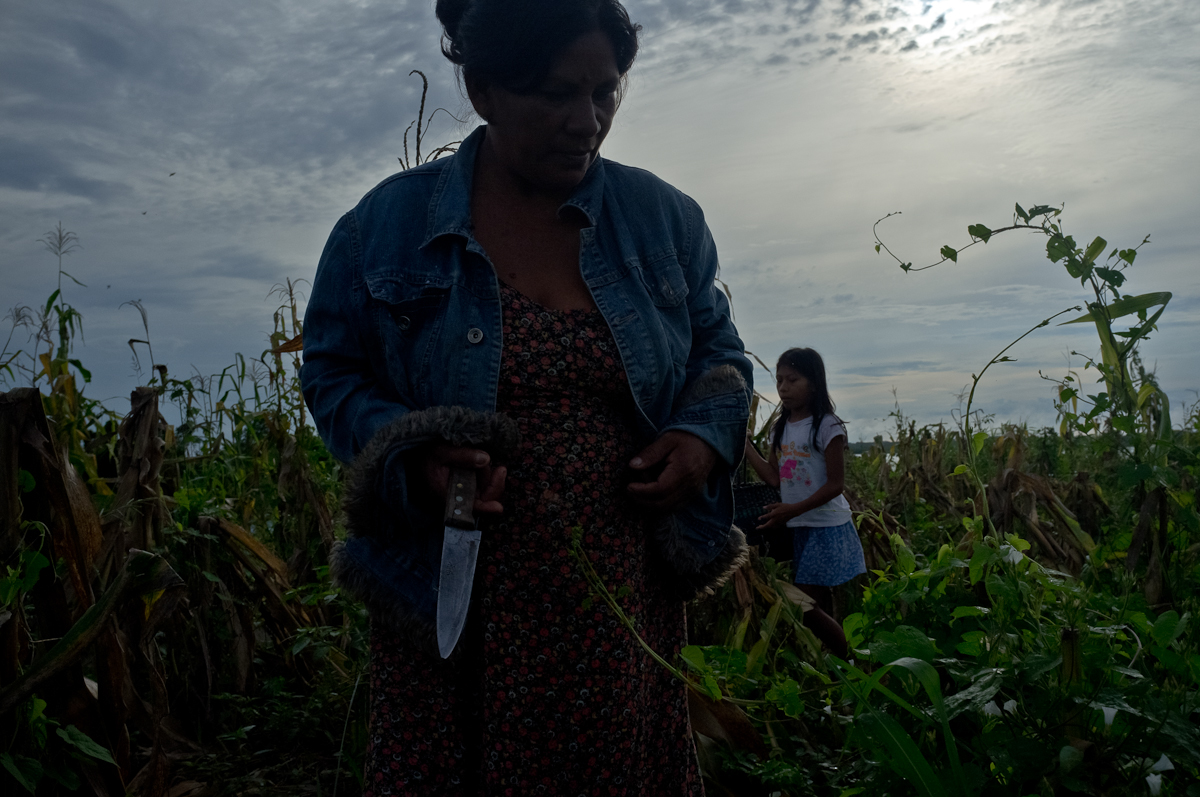
Lourdes Parene Lotchi and one of her daughters is out harvesting the last corn on her field. The money it will bring them is well needed since her husband Walter is in the middle of a costly treatment for his internal bleedings. As the field is located out on the floodplain the family is now in a hurry as the water level is increasing day to day from heavy rain.

Marixa Peña Pacayq says that since she found her now imprisoned husband Teodoro in bed with her doughtier Sheyla six years ago she has had enough of men. Nowadays the only men in her life is her sons and Jesus.



